I would like to be able to take a STL file (triangulated surface mesh) and populate the mesh with points such that the density of points in constant. I am writing the program in Fortran.
So far I can read in binary STL files and store vertices and surface normals. Here is an example file which has been read in (2D view for simplicity).

My current algorithm fills each triangle using the following formula:
x = v1 + a(v2 - v1) + b(v3 - v1) (from here)
Where v1, v2, v3 are the vertices of the triangle and x is a arbitrary position within the triangle (or on the edges) . "a" and "b" vary between 0 and 1 and their sum is less than 1. They represent the distance along two of the edges (which start from the same vertex). The gap between the particles should be the same for each edge. Below is an example of the results I get:

The resulting particle density if nowhere near uniform. Do you have any idea how I can adapt my code such that the density will be constant from triangle to triangle? Relevant code below:
! Do for every triangle in the STL file
DO i = 1, nt
! The distance vector from the second point to the first
v12 = (/v(1,j+1)-v(1,j),v(2,j+1)-v(2,j),v(3,j+1)- v(3,j)/)
! The distance vector from the third point to the first
v13 = (/v(1,j+2)-v(1,j),v(2,j+2)-v(2,j),v(3,j+2)- v(3,j)/)
! The scalar distance from the second point to the first
dist_a = sqrt( v12(1)**2 + v12(2)**2 + v12(3)**2 )
! The scalar distance from the third point to the first
dist_b = sqrt( v13(1)**2 + v13(2)**2 + v13(3)**2 )
! The number of particles to be generated along the first edge vector
no_a = INT(dist_a / spacing)
! The number of particles to be generated along the second edge vector
no_b = INT(dist_b / spacing)
! For all the particles to be generated along the first edge
DO a = 1, no_a
! For all the particles to be generated along the second edge
DO b = 1, no_b
IF ((REAL(a)/no_a)+(REAL(b)/no_b)>1) EXIT
temp(1) = v(1,j) + (REAL(a)/no_a)*v12(1) + (REAL(b)/no_b)*v13(1)
temp(2) = v(2,j) + (REAL(a)/no_a)*v12(2) + (REAL(b)/no_b)*v13(2)
temp(3) = v(3,j) + (REAL(a)/no_a)*v12(3) + (REAL(b)/no_b)*v13(3)
k = k + 1
s_points(k, 1:3) = (/temp(1), temp(2), temp(3)/)
END DO
END DO
j = j + 3
END DO
